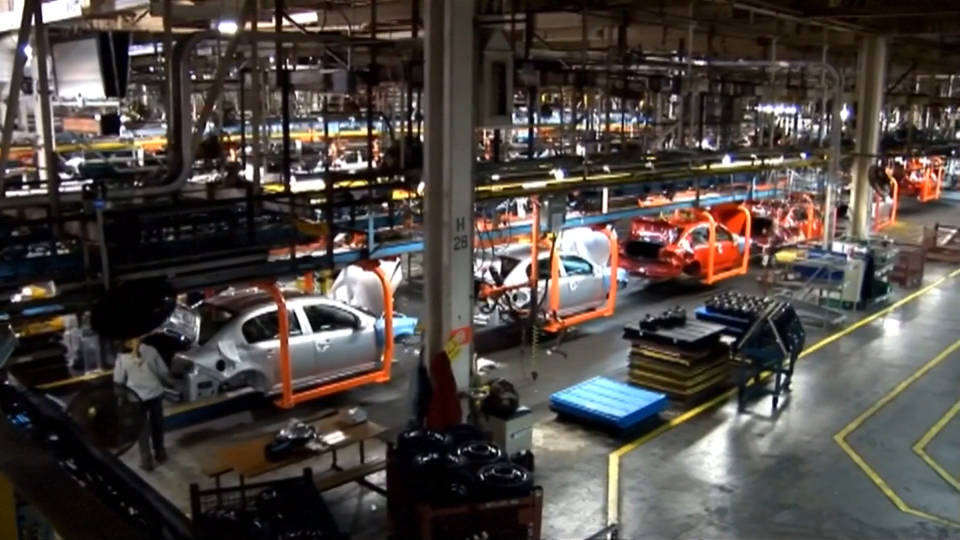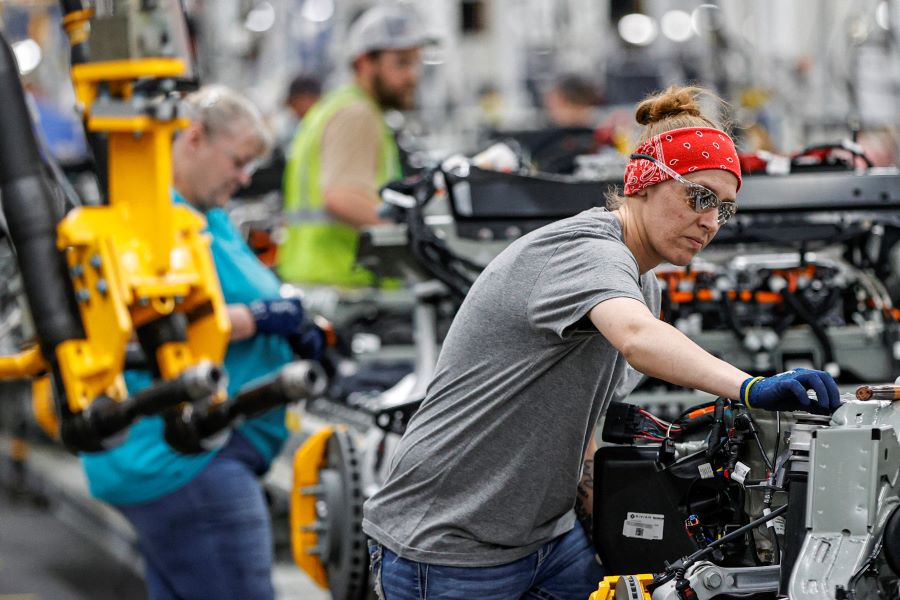The United Auto Workers (UAW) union has started simultaneous strikes at the “Detroit Three,” three significant American automakers.
A group of 13,000 autoworkers picketed outside the Wentzville, Missouri, assembly plant of General Motors on Friday due to a pay dispute with their bosses, at a Ford manufacturing facility in Wayne, Michigan.
The “Big Three,” as they are also known, include, close to Detroit, and a Stellantis Jeep plant in Toledo, Ohio.
According to UAW President Shawn Fain, “For the first time in our history, we will strike all three of the Big Three.”
He added that if the employers did not agree to the workers’ demands, the strike would continue and grow.
The strike, the first of its kind, simultaneously affected all three of America’s unionized automakers.
Union members waving signs applauded the picket line.
The UAW referred to its targeted strike of three plants as a “Stand Up Strike,” which it described as a tactical “new approach” to leaving your job.
The union warned members that more locals might be asked to “Stand Up” and join the strike as time went on. “This gives us the most leverage and flexibility in our battle to secure a fair contract at each of the Big Three automakers.”

After weeks of fruitless negotiations between union leaders and Detroit Three executives over demands for a larger cut of profits from combustion trucks and stronger job security, as automakers transition to electric vehicles, the unions went on strike in a manner that had never before been seen.
A 40 percent pay increase is what the UAW is requesting. However, the executives have accepted a raise of 20%.
Less than two hours prior to the workers’ annual contracts expiring, Fain had outlined the strike’s strategy.
If the new contracts are not accepted, all options are still open, Fain said in his Facebook Live address.
This week, Fain reported that French-owned Stellantis had proposed closing up to 18 of its US factories.
The strike, GM said, was disappointing and it would keep bargaining “in good faith.”
The UAW’s wage and benefit proposals, according to Gerald Johnson, GM’s top manufacturing executive, would cost the automaker $100 billion, more than twice the value of the entire company and “absolutely impossible to absorb.”
Fain has refuted the executives’ claims, stating that the companies have contributed billions of dollars to executive salaries and share buybacks.

Because the automakers still have a large number of vehicles stocked in their depots, analysts believe the strike is still in its early stages and not yet a serious threat.
Sam Fiorani, a production forecaster at Auto Forecast Solutions, said: “This is more of a symbolic strike than a really damaging one.” He added that he had anticipated more in the first wave of the strike.
He added, “We can fully expect a larger strike coming in a week or two if the negotiations don’t go in a direction that Fain thinks is positive.”
According to a Deutsche Bank estimate, each automaker impacted by a full strike would experience earnings losses of $400 million to $500 million for every week of production lost.
According to experts, some of those lost revenues could be recovered by increasing production schedules following a strike, but that chance diminishes as a strike lasts for weeks and months.

